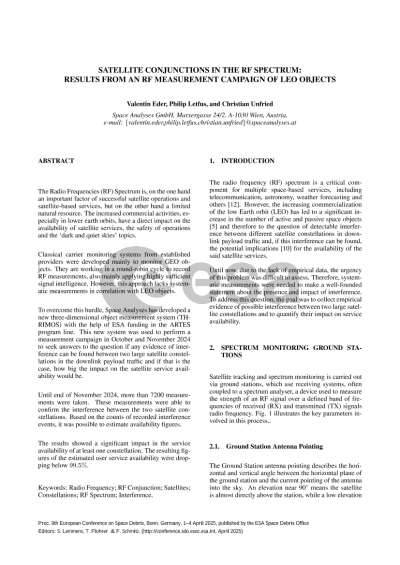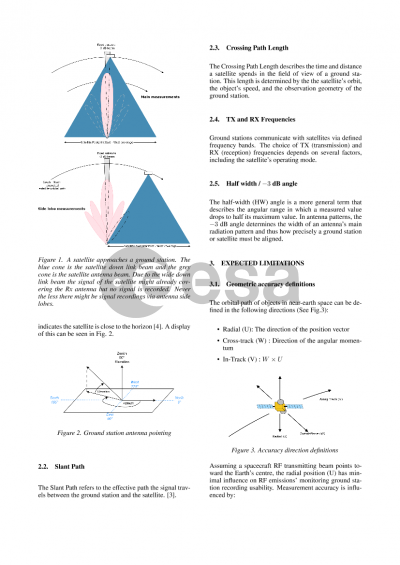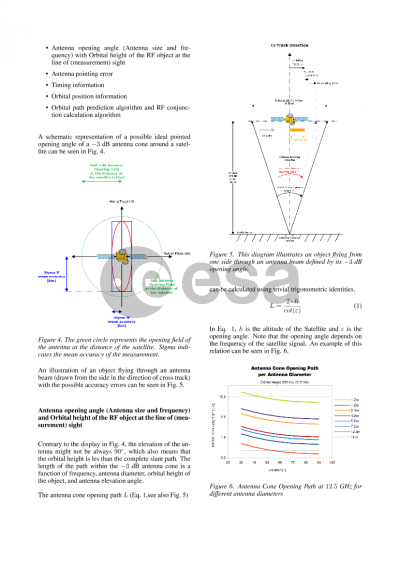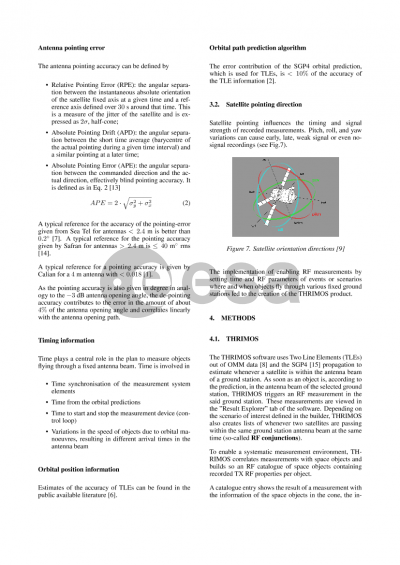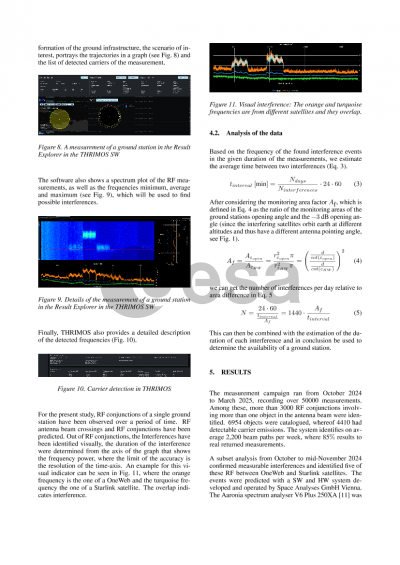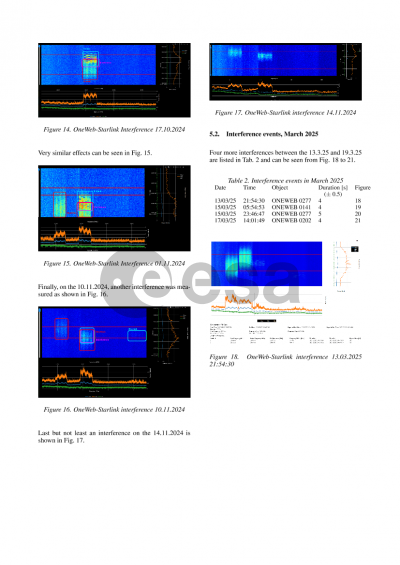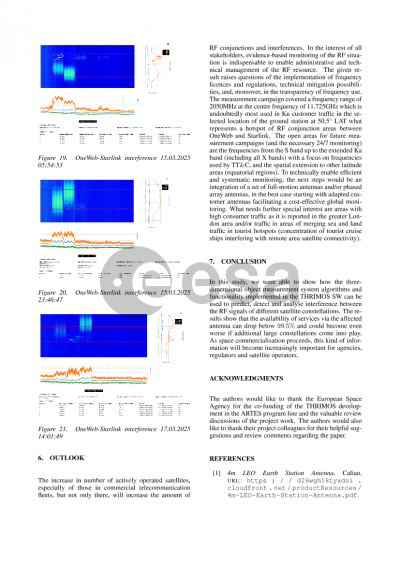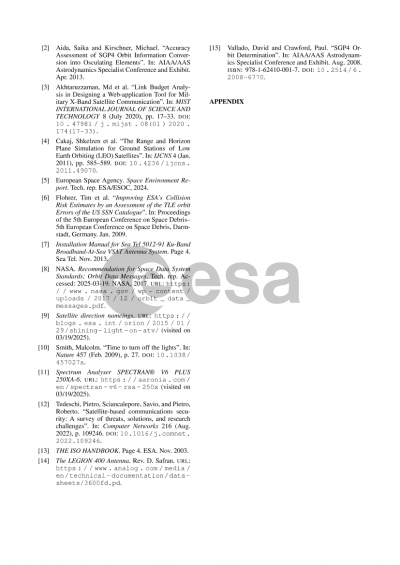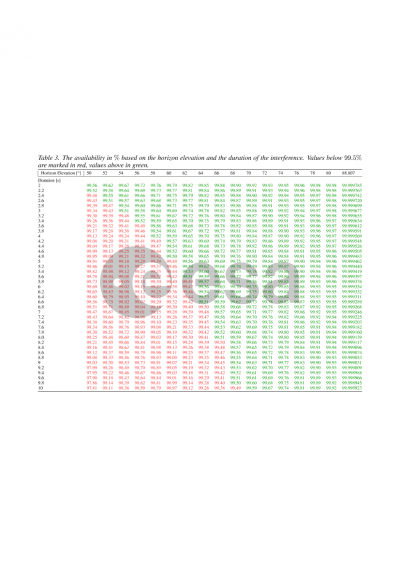Document details
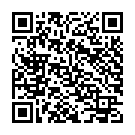
Abstract
The Radio Frequencies (RF) Spectrum is, on the one hand, an important factor of successful satellite operations and satellite-based services, but on the other hand, it is a limited natural resource. The increased commercial activities, especially in LEO orbits have a direct impact on the availability of satellite services, the safety of operations and the ‘dark and quiet skies’ topics.
Classical carrier monitoring systems from established providers were developed mainly to monitor GEO objects. They are working in a round-robin cycle to record RF measurements, also mainly applying highly sufficient signal intelligence. However, this approach lacks systematic measurements in correlation with LEO objects.
To overcome this hurdle, Space Analyses has developed a new three-dimensional object measurement system (THRIMOS) with the help of ESA funding in the ARTES program line. This new system was used to perform a measurement campaign in October and November 2024 to seek answers to the question if any evidence of interference can be found between two large satellite constellations in the downlink payload traffic. If yes, how big the impact on the availability would be.
Until end of November 2024, more than 7200 measurements were taken. These measurements were able to confirm the interference between the two satellite constellations. Based on the counts of recorded interference events, it was possible to estimate availability figures.
The results showed a significant impact in the service availability of at least one constellation. The resulting figures of the estimated user service availability were less than 99.5%.
Preview
